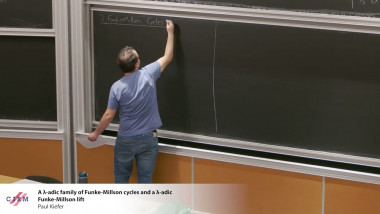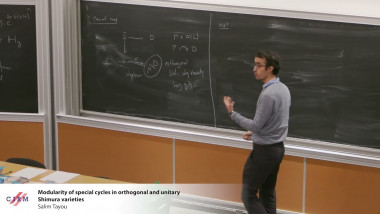
A $\lambda$-adic family of Funke-Millson cycles and a $\lambda$-adic Funke-Millson lift
By Paul Kiefer

Modularity of special cycles in orthogonal and unitary Shimura varieties
By Salim Tayou
Appears in collections : Prime numbers and automatic sequences: determinism and randomness / Nombres premiers et suites automatiques : aléa et déterminisme, Exposés de recherche
For a non-principal Dirichlet character $\chi$ modulo $q$, the classical Pólya-Vinogradov inequality asserts that $M (\chi) := \underset{x}{max}$$| \sum_{n \leq x}$$\chi(n)| = O (\sqrt{q} log$ $q)$. This was improved to $\sqrt{q} log$ $log$ $q$ by Montgomery and Vaughan, assuming the Generalized Riemann hypothesis GRH. For quadratic characters, this is known to be optimal, owing to an unconditional omega result due to Paley. In this talk, we shall present recent results on higher order character sums. In the first part, we discuss even order characters, in which case we obtain optimal omega results for $M(\chi)$, extending and refining Paley's construction. The second part, joint with Alexander Mangerel, will be devoted to the more interesting case of odd order characters, where we build on previous works of Granville and Soundararajan and of Goldmakher to provide further improvements of the Pólya-Vinogradov and Montgomery-Vaughan bounds in this case. In particular, assuming GRH, we are able to determine the order of magnitude of the maximum of $M(\chi)$, when $\chi$ has odd order $g \geq 3$ and conductor $q$, up to a power of $log_4 q$ (where $log_4$ is the fourth iterated logarithm).
